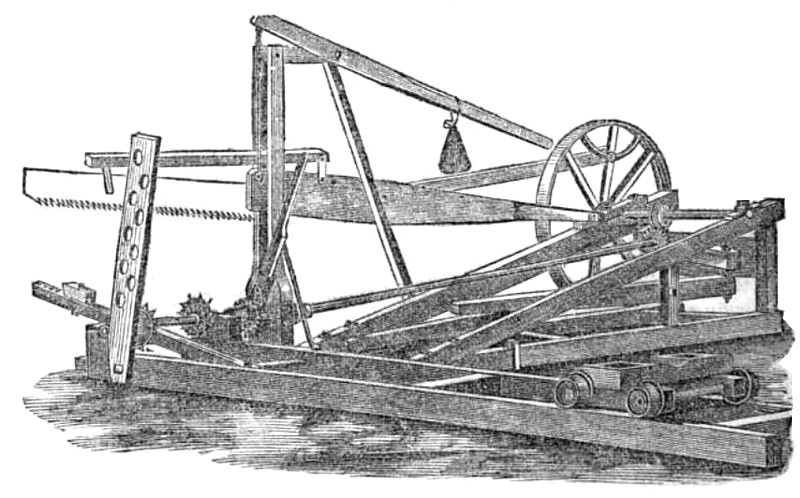|
Title: |
1866 Article-Westinghouse Co., Drag Saw Machine |
|
Source: |
Report of the Commissioner of Agriculture for the Year of 1866, pgs. 236-237 |
|
Insert Date: |
1/15/2013 9:03:21 PM |
On those farms where the timber is sawed into shingle cuts, or cuts for staves, wagon spokes, chair rounds, or firewood, horses or steam engines may be employed with eminent advantage, as one span of horses, if the saw be in proper order, will cut off more logs than twenty active men with cross-cut hand-saws This machine is designed to be worked by a railway horse-power. The belt communicates the motion from the speed wheel of the horse-power to the large wheel in this frame. One end of the pitman is secured to a wrist-pin, which passes through one of the arms of the wheel, while the saw is attached to the other end. On the journal of the large wheel there is a worm which works in the cog or toothed-wheel on the journal which turns the shaft bearing one end of the log. The wheel is brought in contact with the worm while the horse-power is in motion, and the log is moved forward slowly any desired distance. The rear end of the log is supported by a small track. The but end of the log rests on two strong cylinder-heads, the periphery of which is provided with short, strong, sharp-pointed spikes, which enter the bark of the log, or the wood, and thus prevent slipping when the power is applied to move the log endways. If desirable, this worm and cog-wheel may be dispensed with, and a wooden roller, with spikes in it, can be substituted in place of the iron journal, so that the log may be drawn endways by a lever applied to the roller.
The engraving can be readily understood by a practical mechanic, so that the machine will require no further description. |
|
 1866 Westinghouse Co., Drag Saw Machine
1866 Westinghouse Co., Drag Saw Machine
|
|